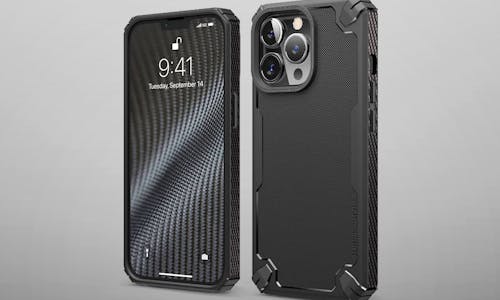With Apple’s shiny new iPhone 8, iPhone 8 Plus and iPhone X adopting wireless charging, there’s a strong possibility that we’ll be seeing a notable uptick in the number of places you’ll be able to juice your phone up wire-free, out in the wild.
Wireless charging itself isn’t a new technology, not by any means. It’s been around for years with the standard used by the new iPhones first having been established back in 2008.
In the smartphone space Nokia (during the earlier days of the Lumia lineage) and Samsung have been the biggest advocates of the technology, with the latter including it on every flagship device since the Galaxy S6 and offering official wireless charging kits for its phones as far back as the Galaxy S3.
How does wireless charging work?
The notion of wireless charging can be distilled down to a pretty simple process. A base station contains a coil which produces a magnetic field when electricity is passed through it, when another coil – in this instance located within a mobile device – comes into range of that magnetic field, it’s converted back into electrical current which charges said mobile device.
The process is also known as inductive charging, wireless power transfer (WPT), wireless power transmission, wireless energy transmission or electromagnetic power transfer.
Whilst there aren’t any commercially available charging stations yet, the 2017 iPhones are also rumoured to support resonant charging – a form of wireless charging that doesn’t require direct contact between the pad and the phone, instead they simply need to be within close proximity to each other.
What are the weaknesses and strengths of wireless charging?
The challenge of transmitting what is effectively power through the air is stifled by energy loss through the various materials the magnetic field must pass through, as well as heat loss. Having said that, some of the most recent systems now offer around 85 percent efficiency which is only likely to improve as time goes on.
The challenge of transmitting power through various materials can also be seen as an advantage, however, as it means manufacturers can create a product with no exposed contacts making it both safer and more aesthetically pleasing whilst still being able to charge. It’s not a huge stretch to imagine a future where the iPhone forgoes ports altogether and exclusively receives both data and power wirelessly.
Another tricky element of the technology that has only more recently become less of a problem has to do with the array of wireless charging standards out there.
Handsets such as the 2017 iPhone lineup and their respective accessories make use of the Qi (the Chinese word meaning ‘energy’) wireless charging standard, meaning that they operate at particular frequencies which will only work with complementary charging products that also make use of the Qi wireless charging standard.
Where is wireless charging already used?
The most obvious application has been with the likes of electric toothbrushes, primarily those made by Oral-B. Some pacemakers also charge via induction, whilst the automotive industry keeps working to create a viable induction charging standard for road-going vehicles, trialled by the likes of the Toyota RAV4 EV. Nokia even made some wireless charging trousers, because why not?
The number of smartphone accessory makers offering wireless charging extras for your phone has grown significantly in recent years too. Powermat was one of the first names in the business to really establish itself but the likes of Belkin, Mophie, Aircharge and even Ikea are now brands worth keeping an eye on if you want to bring more wireless charging technology into your life.
The Swedish furniture giant not only sells cases to add wireless charging to a whole host of different phones (including older models of iPhone) but it offers Qi-standard charging pads, furniture with embedded charging pads and the parts so you can fit charging pads to your existing furniture if you so wish too.

Alongside the iPhone 8, 8 Plus and X, Apple also showed off its new AirPower charging mat, slated for a 2018 launch, this extra-wide Qi charger will be able to power up your compatible iPhone, AirPods and Apple Watch simultaneously.
Where can I find free public wireless charging points?
Whilst sticking a wireless charger in your own home is convenient when you want to chuck your phone on your bedside table without fumbling for a cable in the dark every night, there’s also a network of free wireless charging points out in the wider world for you to make use of too; meaning you don’t have to worry about sticking a cable in your bag every time you step out the house.
Powermat and Starbucks teamed up to include the company’s PMA-standard pads in select stores across the globe back in 2015 and with practically every wireless-charging-capable smartphone utilising Qi-standard technology you’ve needed to borrow an adapter from your barista every time you’ve wanted to juice up in-store. Thankfully the company’s CTO, Itay Sherman recently told SlashGear that it’ll be updating these chargers over the air to support Qi charging, meaning handsets like the iPhone X and Galaxy Note 8 will work with them natively.
In much the same fashion as Powermat, as well as selling its own pads Aircharge too has built a robust network of embedded Qi wireless charging points in an array of places from select McDonald’s to hotels, airports and, of course, phone shops.
In both instances, their respective free iOS (Powermat, Aircharge) and Android (Powermat, Aircharge) apps include a mapping tool that lets you know where your nearest charging point is and best of all, it’s free to download.

Leave a Reply